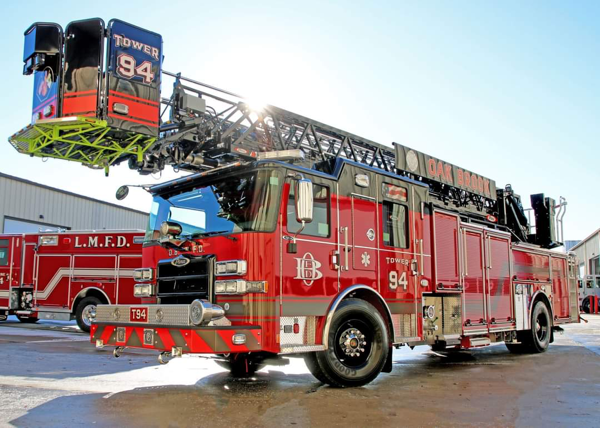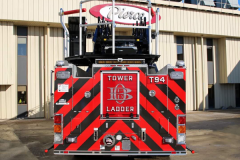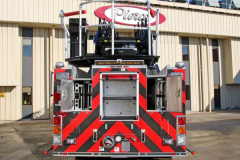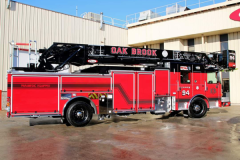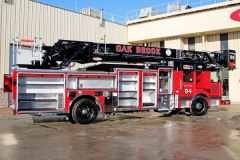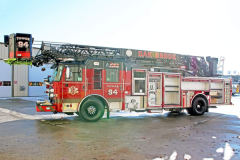From the Pierce Facebook page:
This #Enforcer 110’ #AscendantPlatform will store extrication equipment in the front bumper and ALS equipment inside the cab compartment. The exterior compartments will store air bags and cribbing. The bottom of the platform is colored green and reflects light in the dark to create better visibility. #AerialPlatform #OakBrookIL?Overall height: 12’ 6”Overall length: 42’Pump: Pierce #PUCPump, 1500 gpmTank: 500-gallonJob Number: 36171
thanks Danny
